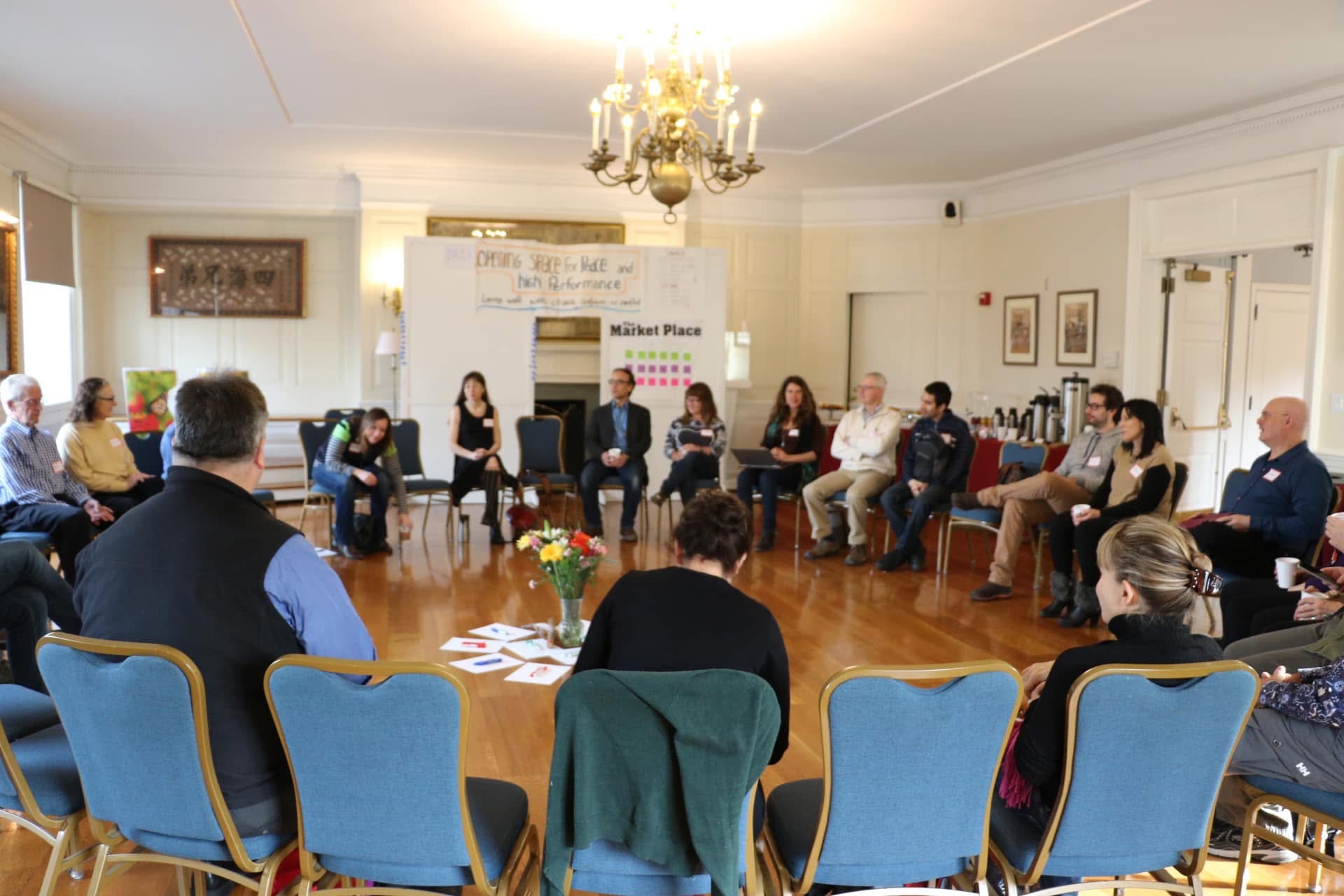Really uncomfortable truths
Want a group of leaders to get uncomfortable?
Sit them in a circle and start talking to them about authenticity and vulnerability.
No one wants to bare their soul in a work setting.
Everyone is afraid they will be seen as weak, be judged, or worse.
Some deflect and resist, suggesting that these things are unprofessional.
Some shut down and stop participating, or invent an "emergency" call they need to step out of the room to take.
Some try and meet the moment, despite the discomfort.
It always begins feeling crunchy, uncomfortable and uncertain.
Even the words authenticity and vulnerability conjure up visions of tears and middle of the night phone calls, heart wrenching news or owning up to harsh mistakes or failure. Very few want to invite these dynamics into their workplace.
So let's get real.
The words authenticity and vulnerability can cause unnecessary reaction and resistance, so let's clarify what we are talking about.
- Authenticity IS about being real, honest, transparent and having the self-awareness to know your own values, strengths and emotions.
- Authenticity IS NOT about letting it all hang out, in messy, unregulated ways, regardless of the impact on those around you.
- Vulnerability IS about transparency and openness, intentionally share a small part of yourself, appropriate for the moment, people and situation.
- Vulnerability IS NOT about over-sharing, or inappropriate sharing for the people or situation, or inviting people into your personal problems.
When we lean into authenticity and vulnerability as leadership strengths, clear on our intentions and commitment, in the context of what the moment or people involved need, we lead powerfully, effectively and with noticeable positive results.
In a recent article in Fast Company entitled Authenticity is the new leadership currency, the yearning for authentic leaders is linked to the decline in trust and the polarization of the times we are in. Author Julee Brooks states:
Amid all of this, people are desperate for leaders who are authentic. Leaders who face the hard truths. Leaders who understand the reality of the people they serve. And most importantly, leaders who deliver results for the actual humans they are leading. People are drawn to leaders who “get it” and who “tell it like it is” regardless of whether their intentions are altruistic or nefarious, evidence that authenticity is what people crave most right now.
She highlights leadership strengths that create authenticity including: empathy, humility, thoughtfulness and integrity. All the "soft skills" that make or break team and organizational performance. Without them, you can't get results but with them you can go further, faster, together.
Other research highlights the link between self-awareness and alignment, or congruence and the impact of authenticity. In other words, you can't fake it. Being true to yourself makes you a better leader, and people can tell when you are faking it.
Harvard Business School Online outlines the results authentic leaders achieve:
- Better relationships with colleagues
- Higher levels of trust
- Greater productivity
- A more positive working environment
In the article Professor Nancy Koehn states: “The last—but by no means least—characteristic of authentic leadership is a willingness to take a leap of faith when things are difficult. To help your followers believe the mission is worthy of pushing forward—even in the face of unexpected hurdles—and that the vast future ahead of them, as Lincoln said, is worth fighting for, being inspired by, and identifying with.”
An article in Science Direct entitled Leadership across levels: Unlocking global potential, states
Authentic leaders remain rooted in their core principles while adjusting outward behaviors to reflect the cultural context. After all, while cultural expressions of authenticity differ, core principles of integrity and transparency are universally resonant. By cultivating cultural intelligence and agility, authentic leaders can bridge divides, promote shared goals, and achieve sustainable success in cross-cultural environments.
When leaders apply intention and discipline and authentically engage, they get better results.
Everything a leader does needs to be put in context, and leaders don't lead with only authenticity and vulnerability to be effective. They must also be self-aware, have the discipline and discernment to know when being real and being transparent will serve their teams, performance and the moment they find themselves leading in.
There are some cautions to consider. For those who define authenticity as "letting it all hang out" and vulnerability as sharing all their challenges and pain, regardless of context, research also points to the caution that you should not bring your whole self to work.

In a recent TikTok video summarizing his book "Don't Be Yourself", Dr. Tomas Chamarro-Premuzic advises leaders to not bring their whole selves to work. He notes that:
- Oversharing dilutes control and creates instability. Emotional control creates stability and builds trust.
- Voicing your personal values can divide teams. In a time of global division, fairness and respect are common ground. It's better to question your own values and be curious about those of others.
- Everyone has inner battles and demons, but leaders shouldn't make them team battles. If your whole self includes argumentative me, grumpy me, sad me, cynical me, these parts of yourself aren't going to support team dynamics or performance.
You can learn more about his work, and 9 examples of when authenticity can backfire here.
Authenticity (or having the self-awareness to know your strengths and values and lead from them) and vulnerability (intentional sharing of parts of yourself that meet the moment and the people involved) are core leadership competencies. On their own, these competencies won't make you a better leader, but combined with intention, integrity, self-awareness, humility and commitment they will go a long way to strengthening teams and communities.





